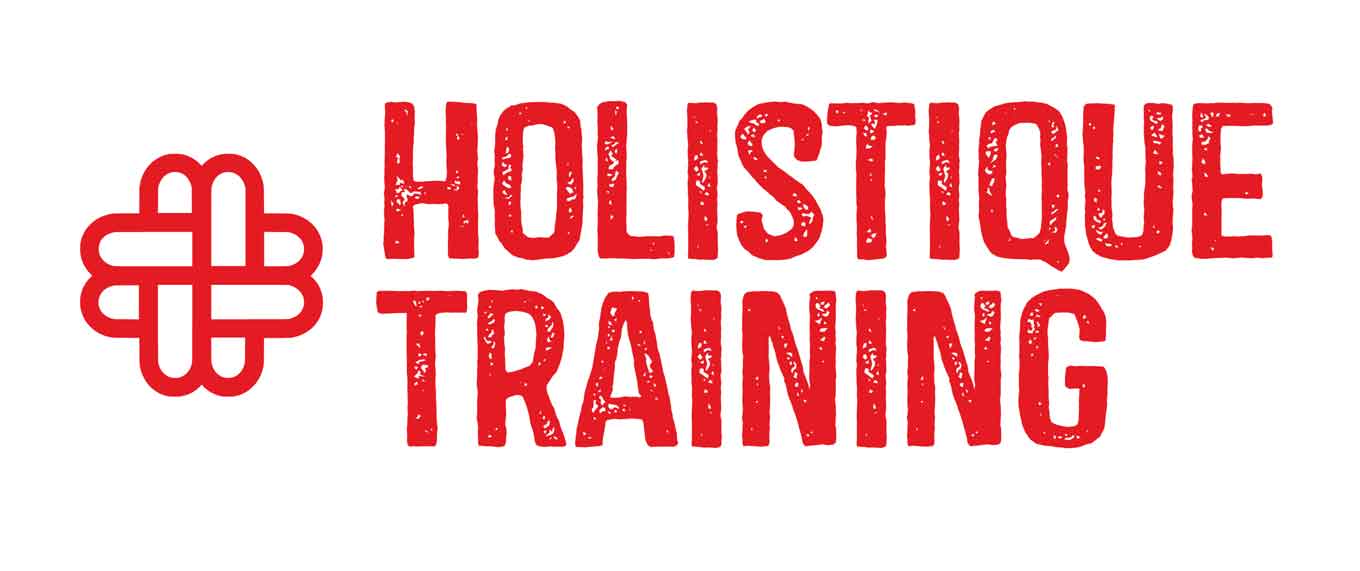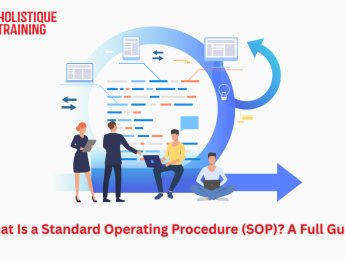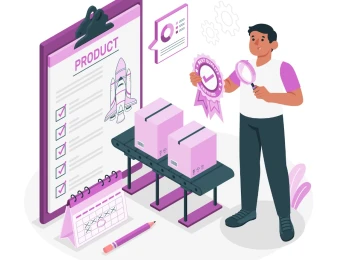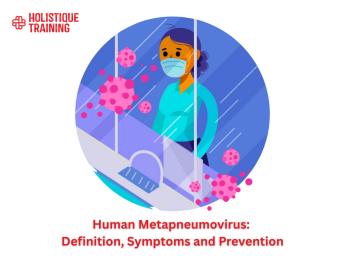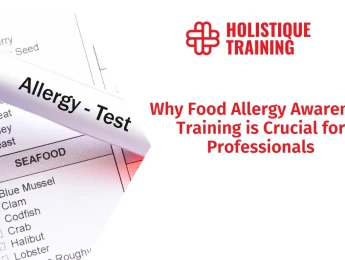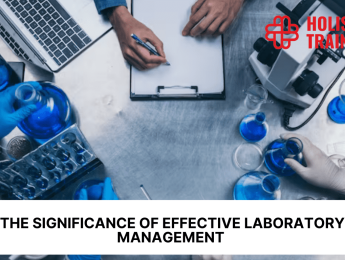- Table of Contents
- Introduction
- 2. Defining Standard Operating Procedure
- Key Components of an SOP Document
- Difference Between SOPs, Work Instructions, and Policies
- 3. Purpose of SOPs
- Ensuring Consistency and Quality
- Improving Efficiency and Productivity
- Supporting Compliance with Regulations and Standards
- Facilitating Employee Training and Onboarding
- Supporting Study from a Credible Source
- 4. Benefits of Implementing SOPs
- Consistency: Standardised Work Output Across Teams
- Accountability: Clear Expectations and Responsibilities
- Risk Reduction: Minimising Errors and Safety Incidents
- Scalability: Easier to Expand Operations
- Case Study – Molson Coors
- 5. Types of SOPs
- Step-by-Step SOPs
- Hierarchical SOPs
- Flowchart-Based SOPs
- Checklists and Hybrid Formats
- Summary in a Table
- Which Format Fits Which Scenario
- 6. Key Elements of an Effective SOP
- Title and Reference Number:
- Purpose and Scope:
- Definitions and Terminology:
- Roles and Responsibilities:
- Step-by-Step Procedures:
- Safety and Compliance Notes:
- Revision History:
- 7. SOP Development Process
- 8. Common Mistakes in SOP Creation
- Overcomplicating the SOP:
- Vague or Ambiguous Instructions:
- Failing to Update SOPs Regularly:
- Poor Version Control:
- Lack of Employee Training and Engagement:
- 9. SOPs in Different Industries
- Healthcare: Patient Safety Protocols
- Manufacturing: Quality Control and Machinery Operation
- Pharmaceuticals: GMP (Good Manufacturing Practices)
- IT & Software: Data Backup and Incident Management
- Hospitality: Guest Service Guidelines
- Brief Real-World Examples
- 10. Digital Transformation of SOPs
- Moving from Paper to Digital SOPs
- SOP Management Software
- Integration with Training Platforms and Knowledge Bases
- Example – ROO.AI
- 11. SOP Compliance and Auditing
- How to Ensure Employees Follow SOPs
- Regular Audits and Revisions
- Role of SOPs in Compliance Frameworks
- 12. Challenges in SOP Implementation
- Resistance from Staff
- Balancing Flexibility with Standardisation
- Updating During Rapid Business Changes
- Cross-Departmental Alignment
- 13. Best Practices for Maintaining SOPs
- Regular Review Schedules
- Feedback Loops for Continuous Improvement
- Training Programmes Linked to SOP Updates
- Conclusion
Introduction
In today’s fiercely competitive and ever-evolving business environment, the phrase “fail to plan, plan to fail” has never been more relevant. A single misstep or oversight can trigger a chain reaction of delays, errors, and wasted resources. This is where Standard Operating Procedures (SOPs) prove invaluable—offering a solution that may lack glamour but delivers undeniable effectiveness. Acting as the backbone of operations, SOPs convert vague instructions into structured, actionable pathways, guiding employees through daily tasks while ensuring consistency, safety, and agility. In simple terms, an SOP is a documented set of detailed instructions that explain how to carry out specific tasks or processes in a standardised way. Serving as a roadmap for both seasoned professionals and new recruits, it ensures that every action follows a clear and consistent sequence, resulting in reliable outcomes.
This article will delve into the formal definition of SOPs, including references to recognised standards and how they differ from related documents; explore their core purposes such as promoting consistency, efficiency, compliance, and training—supported by empirical evidence; outline the benefits of implementation with real-world case studies; compare the different types of SOPs and identify which formats suit specific scenarios; and examine the key elements of an effective SOP, backed by credible research. It will then provide a step-by-step guide to developing SOPs, highlight common mistakes to avoid, illustrate their application across multiple industries, and discuss their digital transformation. Furthermore, it will cover how to maintain compliance and conduct audits, address challenges in implementation, and present best practices for maintaining and continuously improving SOPs. The article concludes by emphasising SOPs’ critical role in operational excellence and issuing a call to action for businesses to review or create their own.
2. Defining Standard Operating Procedure
A Standard Operating Procedure ( SOP ) is a formal, documented set of step-by-step instructions that describe how to carry out specific tasks or processes in a consistent and controlled manner. It is designed to ensure that all employees, regardless of their experience level, perform tasks in the same way to achieve uniform results. By doing so, SOPs enhance operational efficiency, improve product or service quality, and reduce errors or deviations from established standards.
SOPs are not just internal guidelines; they can also be developed in accordance with internationally recognised frameworks and standards. For instance:
- ISO 9001 focuses on quality management and the consistent delivery of products and services that meet customer and regulatory requirements.
- ISO 14001 addresses environmental management, ensuring processes minimise negative impacts on the environment.
- ISO 27001 relates to information security, protecting data integrity, confidentiality, and availability.
When aligned with these or other standards, SOPs not only support internal performance but also demonstrate compliance with external regulatory or certification requirements.
Key Components of an SOP Document
An effective SOP is more than just a list of instructions; it should be a well-structured document that makes processes easy to follow. Typical components include:
- Title and Reference Number – A clear title and unique identifier to make the document easy to locate and track.
- Purpose and Scope – A concise explanation of what the SOP covers and the boundaries of its application.
- Definitions and Terminology – A section to explain any technical terms or abbreviations used.
- Roles and Responsibilities – A breakdown of who is responsible for each task within the process.
- Step-by-Step Procedures – Detailed instructions on how the task should be performed, in sequence.
- Safety and Compliance Notes – Information on potential hazards, regulations, or safety protocols to follow.
- Revision History and Version Control – A record of updates, showing when and why changes were made.
- Visual Aids (Optional) – Flowcharts, diagrams, or checklists to simplify complex processes.
Difference Between SOPs, Work Instructions, and Policies
While related, SOPs, work instructions, and policies serve different purposes and operate at different levels of detail. The table below summarises the distinctions:
Document Type | Purpose | Level of Detail | Focus | Example |
Policies | Outline organisational principles and objectives. | Broad, strategic. | “What” and “Why” – sets the direction. | A quality policy stating the organisation’s commitment to customer satisfaction. |
SOPs | Describe standardised methods for completing tasks. | Moderate detail, process-oriented. | “How” – explains the procedure from start to finish. | SOP for handling customer complaints. |
Work Instructions | Provide specific, detailed steps within a process. | High detail, task-specific. | “How exactly” – step-by-step actions for a particular task. | Instructions for using a specific machine or software feature. |
In summary, policies define the destination and the principles guiding the journey, SOPs chart the route to be taken, and work instructions give turn-by-turn guidance to reach the destination without deviation.
3. Purpose of SOPs
Ensuring Consistency and Quality
Uniformity in processes leads to predictable outcomes, which is essential for maintaining reliability and customer trust. SOPs form the backbone of efficient and dependable business practices, ensuring that tasks are completed in the same manner by all personnel. Scientific literature also emphasises that SOPs establish a systematic approach to work, enabling consistent results across all individuals involved.
Improving Efficiency and Productivity
By reducing ambiguity and eliminating unnecessary decision-making delays, SOPs streamline operations and ensure routine tasks are carried out efficiently. A well-crafted SOP can save time, optimise workflows, and allow teams to focus on higher-value activities rather than repeatedly clarifying instructions.
Supporting Compliance with Regulations and Standards
In sectors where regulatory requirements are strict—such as healthcare, manufacturing, and clinical research—SOPs are indispensable. They minimise the risk of errors, ensure adherence to legal and ethical guidelines, and help organisations meet external audit and certification requirements.
Facilitating Employee Training and Onboarding
SOPs serve as ready-made training tools for new staff, helping them integrate quickly into their roles. Clear procedural documents reduce the learning curve, minimise resource demands during onboarding, and promote early productivity.
Supporting Study from a Credible Source
A study by G. Amare (2012) highlights that modern SOPs are instrumental in maintaining uniformity and consistency across departments that influence an organisation’s products and services—providing concrete evidence of their value in cross-functional operations.
4. Benefits of Implementing SOPs
Consistency: Standardised Work Output Across Teams
SOPs ensure that the quality and outcome of work remain consistent, regardless of who carries out the task. By following standardised instructions, organisations achieve predictable and repeatable results.
Accountability: Clear Expectations and Responsibilities
When responsibilities are explicitly defined, accountability becomes straightforward. SOPs clarify roles, reducing confusion and ensuring that everyone knows their exact duties within a process.
Risk Reduction: Minimising Errors and Safety Incidents
Well-designed SOPs provide clear guidance that prevents mistakes and promotes safe practices. By reducing human error—often a major cause of operational downtime—they help protect both staff and organisational assets.
Scalability: Easier to Expand Operations
Standardised, documented processes are far easier to replicate across new teams, sites, or markets. SOPs support smooth scaling without the need to reinvent procedures each time.
Case Study – Molson Coors
In the manufacturing sector, Molson Coors integrated SOPs across all stages of production—from brewing to packaging. This led to a 33% reduction in lost-time incidents and a 50% decrease in quality-related issues, demonstrating the tangible impact of systematic procedural management.
5. Types of SOPs
Step-by-Step SOPs
Linear instructions listing actions in sequential order—ideal for routine or simple tasks.
Hierarchical SOPs
Organised by levels or decision points—useful in complex operations where different conditions require different sub‑procedures.
Flowchart-Based SOPs
Visual diagrams showing the process and decision branches—excellent for illustrating options and conditional steps.
Checklists and Hybrid Formats
Simple tick‑off items or hybrids combining narrative and checklist or flowchart elements—great where verification is crucial.
Summary in a Table
SOP Type | Format | Best for |
Step‑by‑Step | Numbered list | Simple, linear tasks |
Hierarchical | Sectioned/subsectioned | Complex tasks with conditional branches |
Flowchart-Based | Visual flow diagram | Conditional or multi‑path processes |
Checklist / Hybrid | Tick boxes + notes | Verification, compliance, simple tasks |
Which Format Fits Which Scenario
- Routine, linear tasks → Step‑by‑step.
- Operations requiring branching logic → Hierarchical or flowchart.
- Where visual clarity or compliance checks are vital → Flowchart or checklist/hybrid.
6. Key Elements of an Effective SOP
An effective SOP is not just a set of instructions—it is a well-structured, accessible, and clearly written document that can be relied upon by anyone who needs to follow the process. To achieve this, it should include the following essential elements:
Title and Reference Number:
Each SOP should have a clear title that describes its content and a unique reference number for easy identification. The reference number supports version control, allowing users to track updates and retrieve the correct document quickly.
Purpose and Scope:
This section explains the objective of the SOP—why it exists—and outlines its scope, including the departments, roles, or situations in which it applies. A well-defined purpose and scope prevent misuse or misinterpretation.
Definitions and Terminology:
Any technical terms, acronyms, or specialised jargon should be clearly defined. This prevents ambiguity and ensures that all readers, regardless of experience or background, interpret the instructions in the same way.
Roles and Responsibilities:
Clearly specify who is responsible for each action within the process. This eliminates confusion, promotes accountability, and helps managers track performance and compliance.
Step-by-Step Procedures:
This is the heart of the SOP. The instructions should be sequential, concise, and actionable, detailing exactly what needs to be done, how it should be done, and in what order. Including visual aids such as flowcharts can further enhance clarity, especially for complex processes.
Safety and Compliance Notes:
Identify any risks, hazards, or regulatory requirements associated with the process. This section should highlight safety measures, legal obligations, and industry standards to ensure the procedure complies with relevant guidelines.
Revision History:
A comprehensive log of changes—including the date, description of modifications, and the person responsible—ensures that staff are always working from the latest approved version. This also serves as an audit trail for regulatory purposes.
Supporting Study: Research on SOP compliance in clinical research emphasises the importance of including detailed roles, clear definitions, and robust revision history to maintain both operational efficiency and regulatory compliance (Infonetica, 2021).
7. SOP Development Process
Creating an effective SOP is a systematic process that ensures accuracy, usability, and relevance. The typical stages include:
- Identify the Need and Scope
Determine which process requires documentation and establish its boundaries. This prevents unnecessary overlap with other SOPs. - Gather Process Knowledge from Experts
Engage subject-matter experts and frontline staff who understand the process in detail. Their insights help ensure the SOP reflects actual workflow practices. - Draft the SOP in the Chosen Format
Decide on the most appropriate format—step-by-step, flowchart, or hybrid—and create the initial draft, keeping language clear and instructions logical. - Review and Get Stakeholder Approval
Seek feedback from managers, compliance officers, and end-users to confirm that the SOP is accurate, practical, and aligned with organisational standards. - Test / Pilot the SOP
Conduct a trial run of the SOP to identify any unclear instructions or gaps. This step ensures the procedure is workable in real-life conditions. - Finalise and Distribute
Approve the SOP and make it available in a central repository. Ensure all relevant staff have easy access and are informed of its release.
8. Common Mistakes in SOP Creation
Even with the best intentions, poorly designed SOPs can hinder performance rather than enhance it. Common pitfalls include:
Overcomplicating the SOP:
Including unnecessary detail or excessive technical jargon can make the document difficult to read and discourage employees from using it.
Vague or Ambiguous Instructions:
Unclear language leads to inconsistent application, as different people may interpret the steps differently.
Failing to Update SOPs Regularly:
Outdated procedures can introduce errors, cause inefficiencies, and even lead to regulatory non-compliance. Regular reviews are essential.
Poor Version Control:
Without strict version control, multiple conflicting copies can circulate, causing confusion and mistakes.
Lack of Employee Training and Engagement:
Even the most well-written SOP will fail if employees are not trained to use it or do not understand its importance.
Additionally, assigning SOP creation to someone too embedded in the process can be a risk—familiarity may cause them to overlook essential steps. Another common oversight is underestimating the time and effort required to produce a thorough, high-quality SOP.
9. SOPs in Different Industries
Healthcare: Patient Safety Protocols
SOPs outline procedures for surgeries, medication administration, infection control and more—critical for ensuring patient safety.
Manufacturing: Quality Control and Machinery Operation
Operators follow SOPs for machine startups, maintenance, quality inspections, ensuring reliable production standards. The Molson Coors example showed dramatic improvements in safety and quality via these SOPs.
Pharmaceuticals: GMP (Good Manufacturing Practices)
Strict regulatory adherence (FDA, EMA, ICH GCP) requires SOPs for drug formulation, quality checks, documentation and traceability/.
IT & Software: Data Backup and Incident Management
IT teams use SOPs for data backups, system restores, incident response, and disaster recovery, ensuring service continuity.
Hospitality: Guest Service Guidelines
Well‑structured SOPs govern room cleaning, check‑in procedures, food safety and guest experiences—critical for uniform quality.
Brief Real-World Examples
- A hospital’s SOP for patient intake ensures every patient goes through the same safety checks, reducing clinical errors.
- Molson Coors’ SOP implementation delivered significant safety and quality improvements in manufacturing.
- Clinical research SOPs uphold study integrity through clear steps for informed consent, data handling and compliance
10. Digital Transformation of SOPs
The management of Standard Operating Procedures has undergone a significant transformation in recent years, shifting from cumbersome paper-based systems to agile, digital platforms. This evolution has not only modernised document storage but has also fundamentally improved the way SOPs are accessed, updated, and applied within organisations.
Moving from Paper to Digital SOPs
Historically, SOPs were stored in binders, filing cabinets, or departmental folders—often making them difficult to update, prone to physical damage, and inaccessible to remote or off-site staff. The move to digital formats has eliminated many of these limitations. Digital SOPs are available in real-time, searchable by keyword, and can be updated instantly across the entire organisation. This reduces the risk of employees using outdated versions and ensures everyone works from the same, most current set of instructions.
SOP Management Software
Modern SOP management platforms offer much more than simple document storage. They provide:
- Version Control: Ensuring only the latest approved document is in circulation, with a full history of changes.
- Centralised Storage: A single, secure location accessible by authorised personnel across departments and locations.
- User Access Tracking: Recording who accessed the SOP, when, and for how long—important for compliance audits.
- Change Notifications: Automatic alerts to inform staff when updates or revisions are made.
- Search and Filter Functions: Enabling quick retrieval of relevant SOPs by keywords, categories, or tags.
Integration with Training Platforms and Knowledge Bases
Digital SOPs can be directly linked to Learning Management Systems (LMS) or internal knowledge bases. This integration enables:
- Automated Training: New or revised SOPs can be tied to mandatory training modules.
- Competency Assessments: Employees can be tested on their understanding of SOPs through quizzes or simulations.
- Compliance Tracking: HR and compliance teams can monitor which employees have completed training related to each SOP.
Example – ROO.AI
In manufacturing, companies like ROO.AI have embraced digital SOP platforms to enable real-time collaboration, live change tracking, and interactive visual SOPs that can be accessed on mobile devices. These solutions allow dynamic updates, which are immediately reflected across all user devices—helping keep pace with rapid operational changes.
11. SOP Compliance and Auditing
Even the best SOP is ineffective if it is not followed. Ensuring compliance requires a structured approach that combines training, monitoring, and continuous improvement.
How to Ensure Employees Follow SOPs
Organisations can improve adherence through:
- Comprehensive Training: Introducing SOPs during onboarding and reinforcing them through refresher courses.
- Competency Assessments: Evaluating employees’ ability to follow SOPs accurately.
- Audits and Spot Checks: Observing processes in action to verify compliance.
- Feedback Mechanisms: Encouraging employees to suggest improvements or highlight unclear steps.
- Built-in Reminders or Checklists: Embedding prompts within workflows to ensure steps are not skipped.
Regular Audits and Revisions
SOPs should be reviewed periodically—typically annually or whenever significant process changes occur. Audits verify that procedures are both relevant and being applied as intended. This process ensures continuous alignment with operational goals, safety requirements, and legal obligations.
Role of SOPs in Compliance Frameworks
- ISO Standards: SOPs form the operational foundation of Quality Management Systems, such as ISO 9001, ensuring that processes consistently meet customer and regulatory requirements.
- OSHA and FDA Regulations: In manufacturing, laboratories, and food/pharmaceutical industries, SOPs document compliance with safety protocols, production standards, and quality assurance measures.
- Clinical Trials and Research: SOPs aligned with the International Council for Harmonisation’s Good Clinical Practice (ICH GCP) guidelines safeguard research integrity, protect participants, and ensure data accuracy.
By integrating digital solutions with robust compliance processes, organisations can not only maintain operational consistency but also respond swiftly to audits, regulatory changes, and evolving industry standards.
12. Challenges in SOP Implementation
Resistance from Staff
People may perceive SOPs as restrictive or unnecessary. Involving end users in development and providing hands-on training helps build buy-in.
Balancing Flexibility with Standardisation
Excessive rigidity can hamper adaptability. Allow room for judgement in exceptional circumstances while maintaining core standards.
Updating During Rapid Business Changes
Fast-moving environments may outpace SOP revisions. Assign ownership for updates, schedule frequent reviews, and use agile digital systems.
Cross-Departmental Alignment
Processes may span functions. Collaboration and clear communication between departments are vital to coherent SOPs across systems.
13. Best Practices for Maintaining SOPs
Regular Review Schedules
For SOPs to remain effective, they must reflect current processes, technologies, and regulatory requirements. Establishing a clear review schedule—typically once a year or whenever there is a significant operational change—ensures the document stays accurate and relevant. Event-triggered reviews, such as after a safety incident, process improvement initiative, or regulatory update, allow organisations to make targeted adjustments promptly. This proactive approach reduces the risk of outdated instructions leading to errors, non-compliance, or inefficiencies. Additionally, assigning a responsible party or committee to oversee the review process creates accountability and ensures consistency across all departments.
Feedback Loops for Continuous Improvement
The people who use SOPs daily are often best positioned to identify gaps, inefficiencies, or outdated steps. Encouraging staff to provide ongoing feedback fosters a sense of ownership and engagement with the process. Feedback can be collected through formal channels such as surveys, suggestion boxes, or digital reporting tools, as well as informal discussions during team meetings. Incorporating this feedback into SOP revisions not only improves the accuracy and usability of the document but also builds trust between management and staff. When employees see their suggestions implemented, they are more likely to follow procedures diligently and contribute ideas for further enhancements.
Training Programmes Linked to SOP Updates
Even the most thorough SOP revisions are ineffective if employees are not made aware of the changes. Linking SOP updates to structured training programmes ensures that staff understand and can apply the new or modified procedures. This training can take various forms, from in-person workshops to e-learning modules and short instructional videos. Including practical demonstrations or simulations can further enhance understanding. Tracking training completion through a Learning Management System (LMS) or internal recordkeeping ensures compliance and allows managers to identify any individuals who need additional support. By making training a mandatory part of the SOP update process, organisations ensure that procedural changes are not only documented but also embedded into daily operations.
Conclusion
Standard Operating Procedures are structured, documented instructions that bring consistency, quality, efficiency, and compliance to business operations. They serve as a bridge between policy and execution, and thrive when they’re clear, accessible, updated, and user-centric.
Far from being bureaucratic burdens, effective SOPs are silent workhorses that support operational excellence. From scaling operations to ensuring safety and quality, they anchor business performance on solid foundations. If your organisation lacks SOPs—or relies on outdated, convoluted or paper-only versions—now is the moment to act. Engage your teams, select the right formats, start drafting, pilot thoroughly, digitise and train. Let SOPs become the scaffolding for your success, not the shackles. Operational excellence awaits—start laying the groundwork today.
